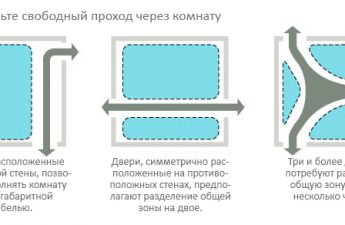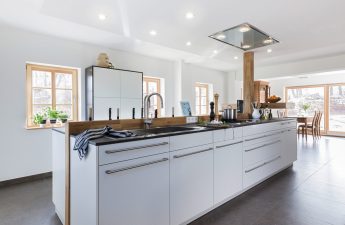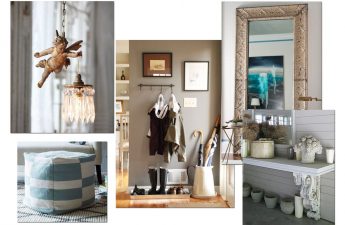Make both the kitchen and the living room spacious,organize a dining room without affecting the rest of the rooms? It is not only possible, it is convenient and beautiful! However, there are many nuances here, which we will tell you about in as much detail as possible. You need to combine such different rooms skillfully - on the one hand, so that their functions do not interfere with each other, and on the other, so that the space flows freely. But at the same time, we should not forget about more mundane things - those building codes that now and then limit the flight of our imagination when we want to combine rooms ... The first and most important thing to consider is the restrictions on moving the kitchen during redevelopment. Clause 24 of the Decree of the Government of the Russian Federation No. 47-PP prohibits the transfer of the kitchen to the area of the living room if there is a living room under this area. It is allowed to change the configuration of the space only if the apartment is on the ground floor (but only on condition that the stove in the kitchen is electric, kitchens with gas stoves cannot be moved or expanded).  When combining the area of the kitchen area and living spacerooms should be taken into account specifications for the zones. So, P. 5.7 SP 54.13330.2011 establishes that in one-room apartments the area of the room should not be less than 14 square meters, and in two-, three-room or more, the area of the common room is at least 16 square meters, and the kitchens - 8 square meters. Kitchen-niche (room with kitchen equipment without separate dining area) can be from 5 square meters.
When combining the area of the kitchen area and living spacerooms should be taken into account specifications for the zones. So, P. 5.7 SP 54.13330.2011 establishes that in one-room apartments the area of the room should not be less than 14 square meters, and in two-, three-room or more, the area of the common room is at least 16 square meters, and the kitchens - 8 square meters. Kitchen-niche (room with kitchen equipment without separate dining area) can be from 5 square meters. 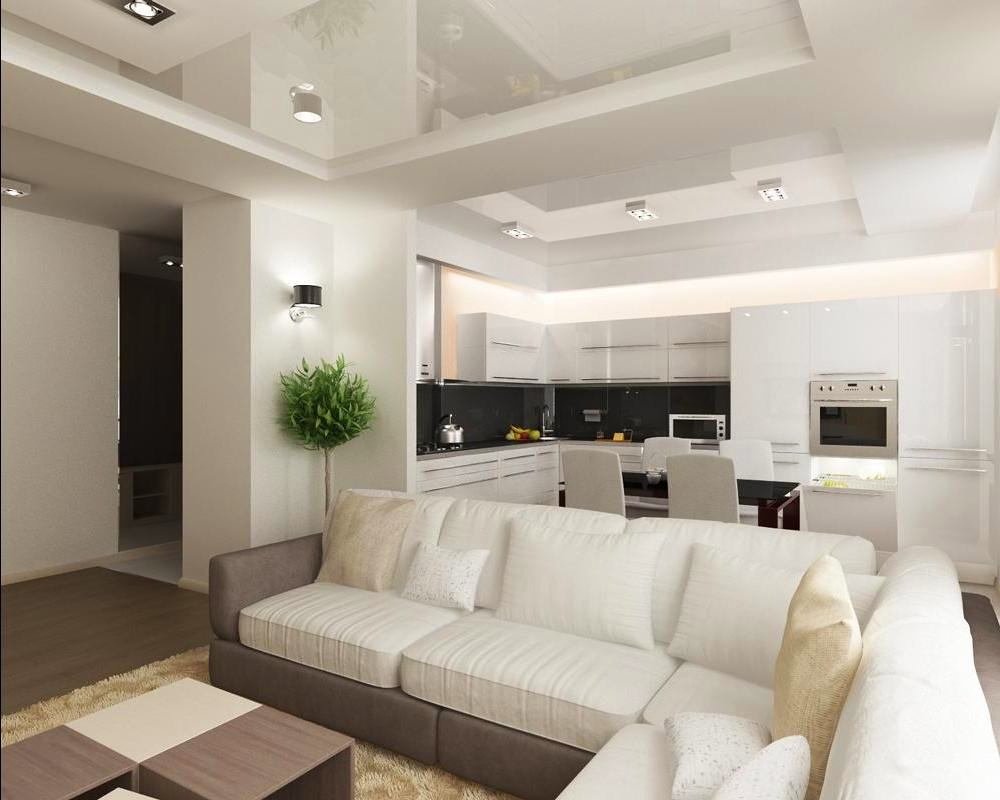 Methods of zoning space: you need to be able not only to unite the rooms, but also to divide the kitchen, dining room and living room both visually and functionally. This can be done by contrasting the floor coverings, the height difference between the floor and ceiling (especially the ceiling bolts often remain), lighting and, of course, furniture: a bar counter, a turn of the kitchen set, a dining area behind the rack, or simply a sofa set back to the kitchen .
Methods of zoning space: you need to be able not only to unite the rooms, but also to divide the kitchen, dining room and living room both visually and functionally. This can be done by contrasting the floor coverings, the height difference between the floor and ceiling (especially the ceiling bolts often remain), lighting and, of course, furniture: a bar counter, a turn of the kitchen set, a dining area behind the rack, or simply a sofa set back to the kitchen . 

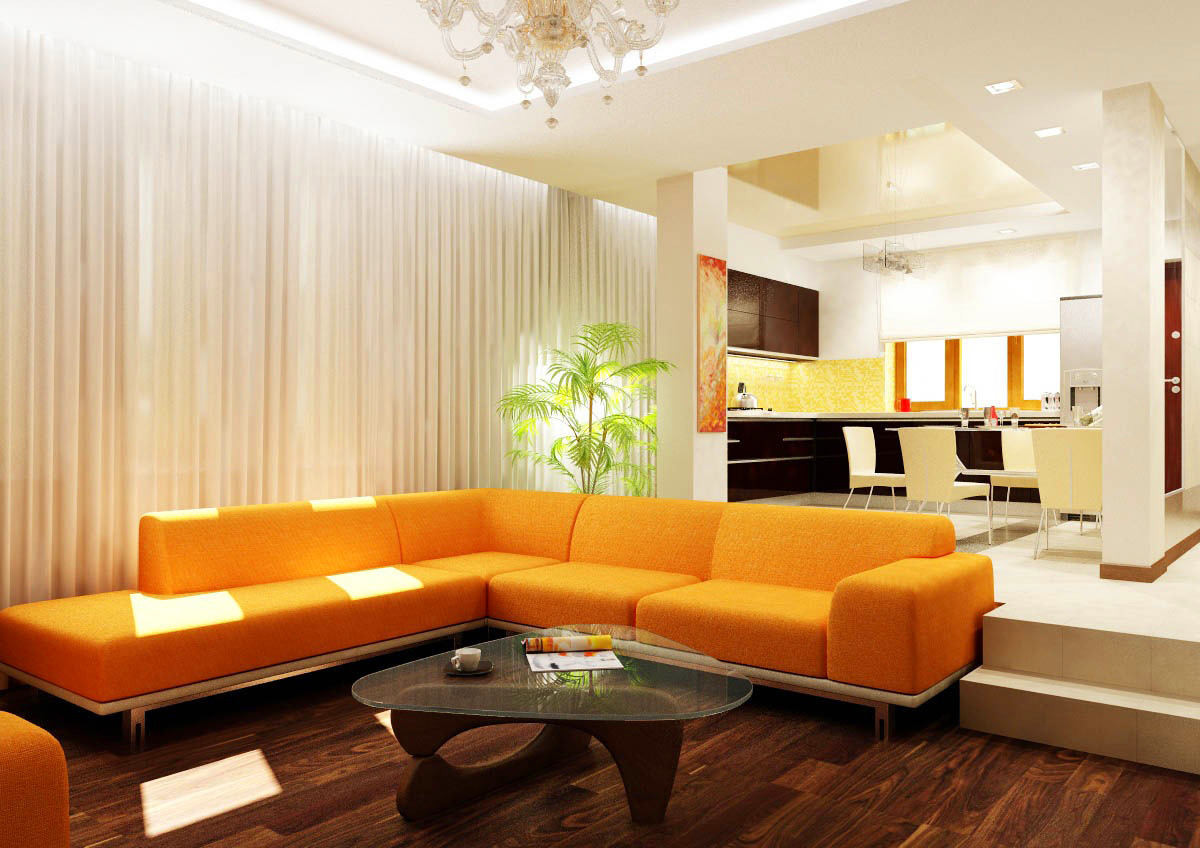 Our opinion:- A sofa standing in the middle of a room, especially a corner one, immediately becomes the central object of the room, and you need to choose it especially carefully, since it will be viewed from all sides. Let's move on to the options for the formation of the dining area. It is desirable to separate the place for daily meals from the recreation area, and a table with chairs is the most traditional solution. For the tightest spaces, a bar counter is also suitable, but its width should be as large as possible. When space allows, it will be interesting to organize a kitchen island that combines a dining tabletop and built-in appliances - a hob and an oven, or a sink with a dishwasher. Chairs for such a countertop are something in between in height between ordinary and bar ones.
Our opinion:- A sofa standing in the middle of a room, especially a corner one, immediately becomes the central object of the room, and you need to choose it especially carefully, since it will be viewed from all sides. Let's move on to the options for the formation of the dining area. It is desirable to separate the place for daily meals from the recreation area, and a table with chairs is the most traditional solution. For the tightest spaces, a bar counter is also suitable, but its width should be as large as possible. When space allows, it will be interesting to organize a kitchen island that combines a dining tabletop and built-in appliances - a hob and an oven, or a sink with a dishwasher. Chairs for such a countertop are something in between in height between ordinary and bar ones. 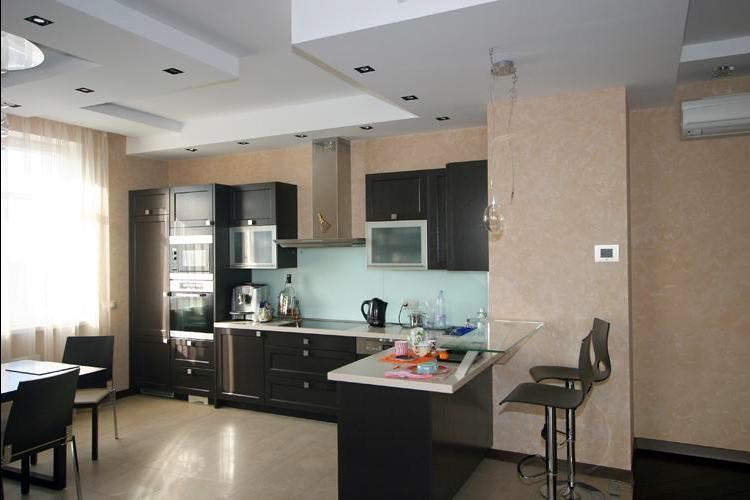
When zoning rooms or uniting roomssufficient light should be provided. According to paragraph 3.9. SanPiN 2.1.2.2645-10 "Sanitary and epidemiological requirements for living conditions in residential buildings and premises", as a result of re-planning "... living rooms and kitchen can not remain without natural light, which must be provided through openings in the outer walls."
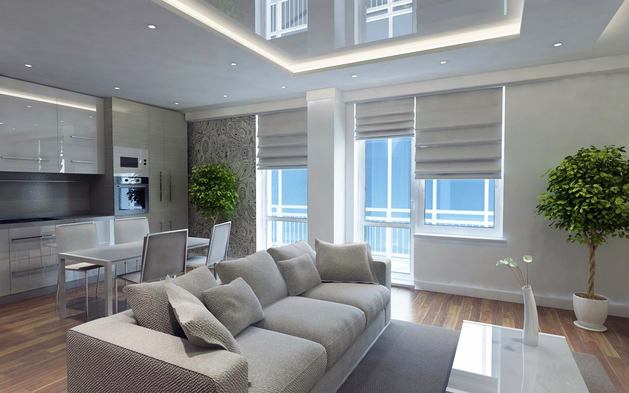
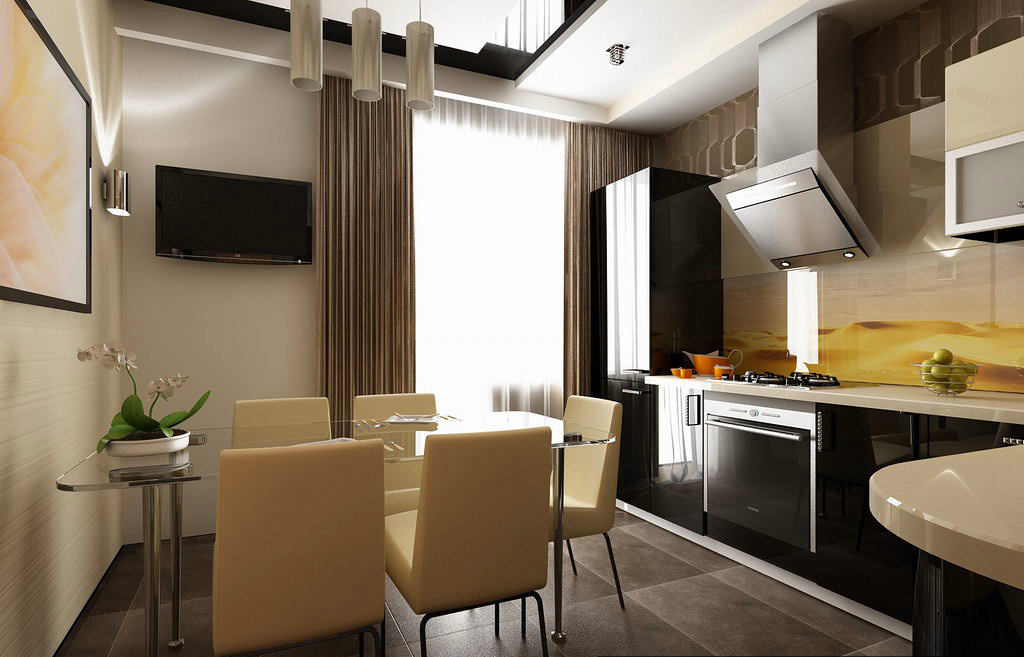 Our opinion:- Direct lighting from an ordinary window will be sufficient with a room depth of no more than 6 meters, and even less if there are side niches and turns. A well-thought-out scenario of artificial lighting. In addition to lighting the common space, it is imperative to provide local lighting above the dining table (or place a general one above it), for the kitchen unit (built-in lamps) and in the recreation area (sconces, floor lamps, table lamps).
Our opinion:- Direct lighting from an ordinary window will be sufficient with a room depth of no more than 6 meters, and even less if there are side niches and turns. A well-thought-out scenario of artificial lighting. In addition to lighting the common space, it is imperative to provide local lighting above the dining table (or place a general one above it), for the kitchen unit (built-in lamps) and in the recreation area (sconces, floor lamps, table lamps). 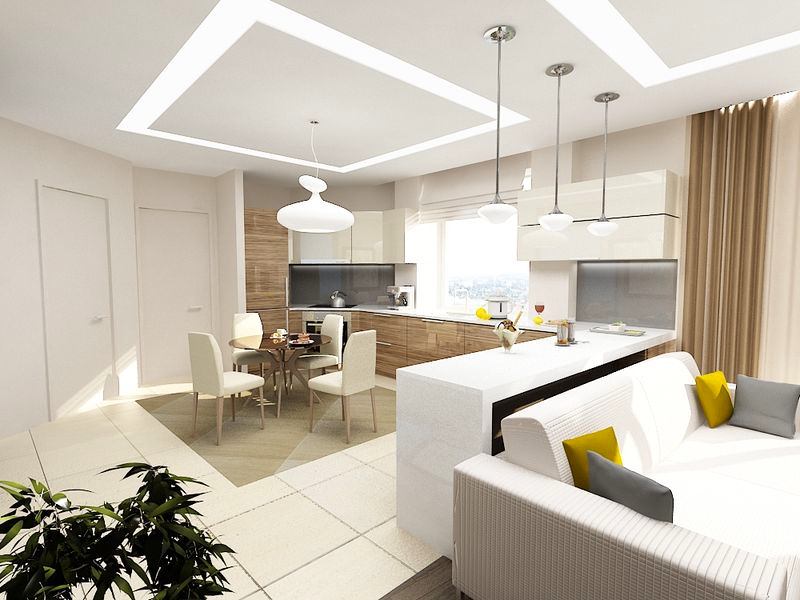
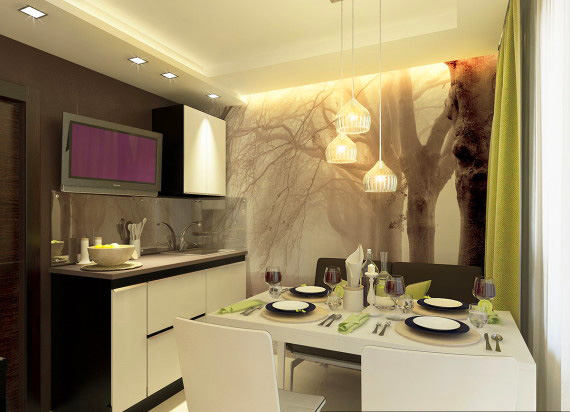 Isolation from the bathroom. As stated in clause 5.1 SanPiN 2.1.2.2645-10, “... it is not allowed to enter a room equipped with a toilet directly from the kitchen and living rooms, with the exception of the entrance from the bedroom to the combined bathroom, provided that there is a second room in the apartment equipped with a toilet, with the entrance to it from the hallway or hall. " Although the engineering networks of the kitchen and the bathroom are often adjacent to each other, facilitating redevelopment, there are restrictions on the transfer of "wet zones", which include the toilet and bathroom. According to clause 9.22 of SNiP 31 -01-2003 "Residential apartment buildings", it is not allowed "to place a toilet and a bathroom (or shower) directly above living rooms and kitchens. Placement of a toilet and a bathroom (or shower) on the upper level above the kitchen is allowed in apartments located on two levels. " When placing a washing machine as part of a kitchen set, it is useful to make a high-quality waterproofing of the room. Although modern cars are protected from leaks, a waterproofing carpet on the floor overlooking the walls will be much more reliable. Particular attention should be paid to the places where the risers pass through the ceiling.
Isolation from the bathroom. As stated in clause 5.1 SanPiN 2.1.2.2645-10, “... it is not allowed to enter a room equipped with a toilet directly from the kitchen and living rooms, with the exception of the entrance from the bedroom to the combined bathroom, provided that there is a second room in the apartment equipped with a toilet, with the entrance to it from the hallway or hall. " Although the engineering networks of the kitchen and the bathroom are often adjacent to each other, facilitating redevelopment, there are restrictions on the transfer of "wet zones", which include the toilet and bathroom. According to clause 9.22 of SNiP 31 -01-2003 "Residential apartment buildings", it is not allowed "to place a toilet and a bathroom (or shower) directly above living rooms and kitchens. Placement of a toilet and a bathroom (or shower) on the upper level above the kitchen is allowed in apartments located on two levels. " When placing a washing machine as part of a kitchen set, it is useful to make a high-quality waterproofing of the room. Although modern cars are protected from leaks, a waterproofing carpet on the floor overlooking the walls will be much more reliable. Particular attention should be paid to the places where the risers pass through the ceiling.
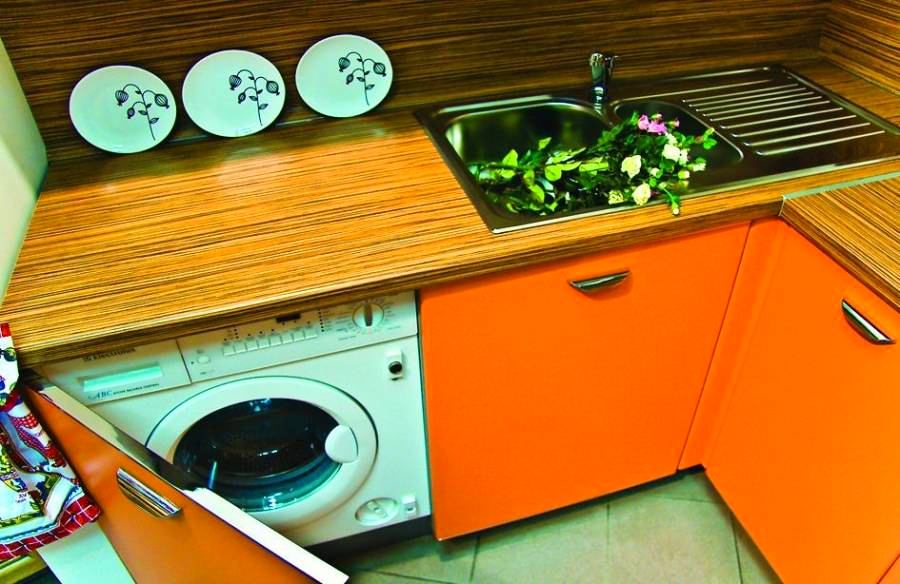 Sufficient ventilation of the kitchen area. Having a stove open in the living room area, you can not do without stretching, especially when the kitchen is away from the window or in the transit area. The slightly increased total volume of the room slightly improves the ventilation.
Sufficient ventilation of the kitchen area. Having a stove open in the living room area, you can not do without stretching, especially when the kitchen is away from the window or in the transit area. The slightly increased total volume of the room slightly improves the ventilation. 
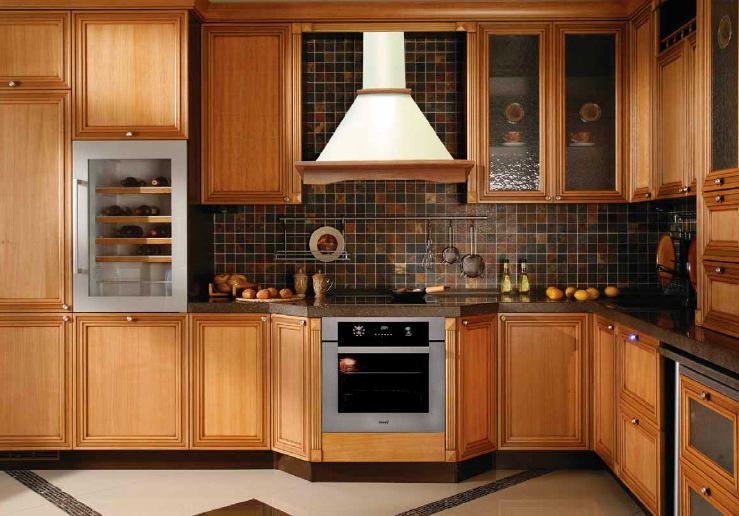
 Our opinion:- When planning a kitchen island with a hood above it, do not forget about the duct wiring; in the presence of a built-in sink, a water supply system with a sewage system is added, for which you will probably need to arrange a floor difference. ok-interiordesign.ru
Our opinion:- When planning a kitchen island with a hood above it, do not forget about the duct wiring; in the presence of a built-in sink, a water supply system with a sewage system is added, for which you will probably need to arrange a floor difference. ok-interiordesign.ru
How to combine the kitchen with the living room: the zoning of a single space

